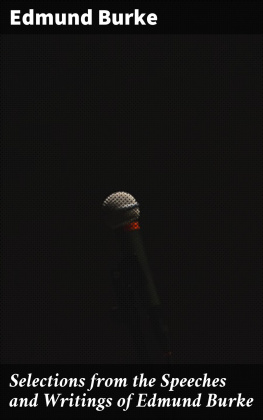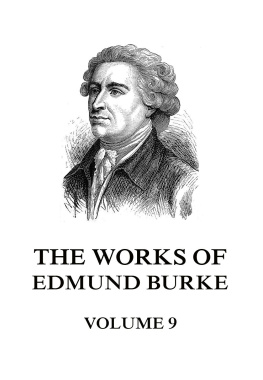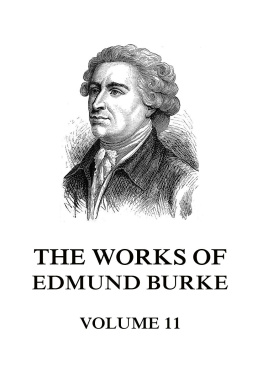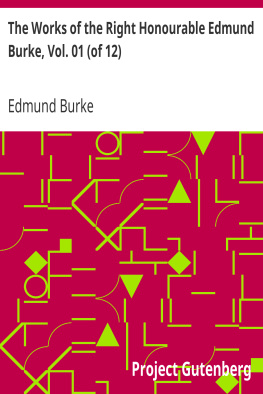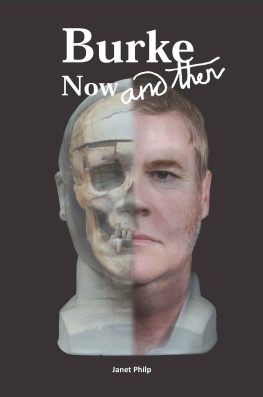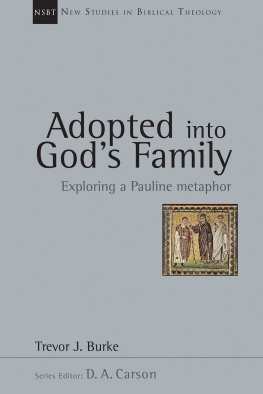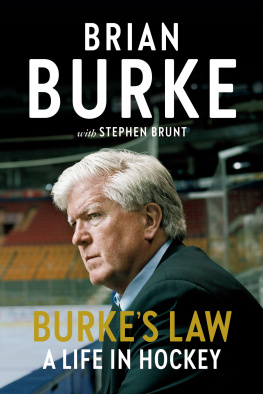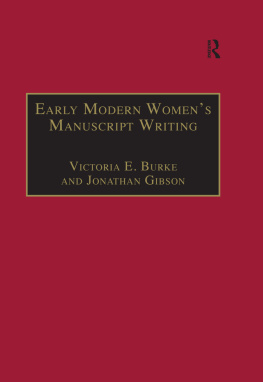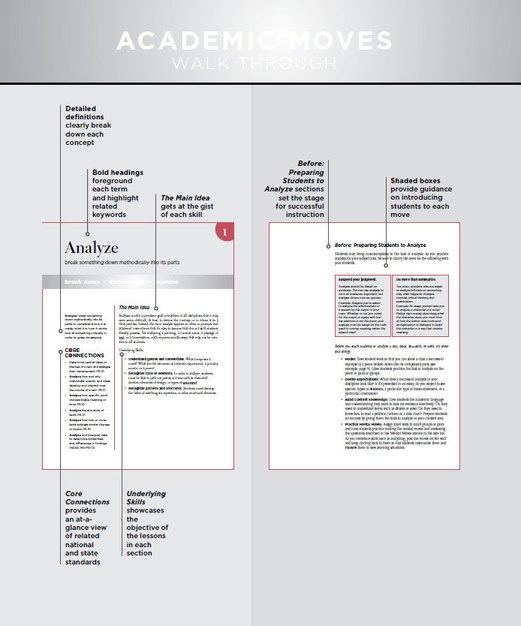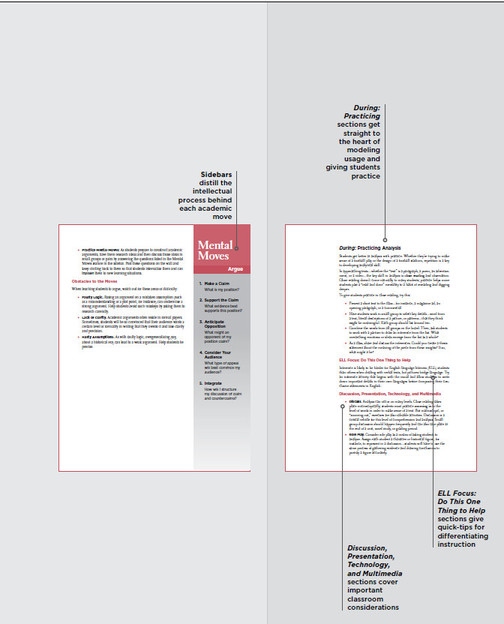What Your Colleagues Are Saying...
Jim Burke and Barry GilmoresAcademic Moves for College and Career Readiness provides clarity and structure for teachers who seek to help their students become more competent and confident thinkers, and does so without compromising the critical role of a teachers content knowledge and creativity in a dynamic classroom. Its economy of expression makes complex ideas accessible, while annotated student work provides a window into learner application. Most significantly, the book is written in the voice of teachers, who live what they recommend.
CAROL ANN TOMLINSON, William Clay Parrish, Jr., Professor, University of Virginia, and Author of The Differentiated Classroom, Second Edition
Burke and Gilmore present a powerful and practical synthesis of the highest-leverage thinking moves that studentsespecially linguistically diverse studentsneed to develop for school, work, and life. They provide what teachers want: clear and concise descriptions of each thinking move, analyses of student work samples, and innovative classroom practices and scaffolds that can be used to develop the moves in a variety of contexts. Fifteen stars!
JEFF ZWIERS, Senior Researcher at Stanford University
Jim Burkes books need to be on the must-read list ofat the very leastall English teachers! Academic Moves for College and Career Readiness is a worthy addition to that list with the academic and thinking moves he and his coauthor, Barry Gilmore, describe critical for any of us who want to up our game in the classroom.
LARRY FERLAZZO, Teacher, Education Week Advice Columnist, and Author of Helping Students Motivate Themselves
What sets Academic Moves for College and Career Readiness apart is its emphasis on student practice and practical application of exemplary instruction. This book speaks to teachers in their language across curriculum areas. Burke and Gilmore have hit the mark on what our students need for college and career readiness.
JAYNE ELLSPERMANN, National Principal of the Year (2014)
Academic Moves for College and Career Readiness, Grades 6-12
15 Must-Have Skills Every Student Needs to Achieve
- Jim Burke
- Barry Gilmore
- www.resources.corwin.com/burkeacademicmoves
FOR INFORMATION:
Corwin
A SAGE Company
2455 Teller Road
Thousand Oaks, California 91320
(800) 233-9936
www.corwin.com
SAGE Publications Ltd.
1 Olivers Yard
55 City Road
London EC1Y 1SP
United Kingdom
SAGE Publications India Pvt. Ltd.
B 1/I 1 Mohan Cooperative Industrial Area
Mathura Road, New Delhi 110 044
India
SAGE Publications Asia-Pacific Pte. Ltd.
3 Church Street
#10-04 Samsung Hub
Singapore 049483
Copyright 2015 by Corwin
All rights reserved. When forms and sample documents are included, their use is authorized only by educators, local school sites, and/or noncommercial or nonprofit entities that have purchased the book. Except for that usage, no part of this book may be reproduced or utilized in any form or by any means, electronic or mechanical, including photocopying, recording, or by any information storage and retrieval system, without permission in writing from the publisher.
All trademarks depicted within this book, including trademarks appearing as part of a screenshot, figure, or other image, are included solely for the purpose of illustration and are the property of their respective holders. The use of the trademarks in no way indicates any relationship with, or endorsement by, the holders of said trademarks.
Printed in the United States of America
Library of Congress Cataloging-in-Publication Data
Burke, Jim, 1961
Academic moves for college and career readiness, grades 6-12 : 15 must-have skills every student needs to achieve / Jim Burke, Barry Gilmore.
pages cm
Includes bibliographical references and index.
ISBN 978-1-4833-7980-7 (pbk. : alk. paper)
1. Thought and thinkingStudy and teachingUnited States. 2. College preparation programsUnited States. 3. EducationStandardsUnited States. I. Gilmore, Barry. II. Title.
LB1590.3.B87 2015
370.152dc232014045597
This book is printed on acid-free paper.
15 16 17 18 19 10 9 8 7 6 5 4 3 2 1
Publisher: Lisa Luedeke
Editorial Development Manager: Julie Nemer
Editorial Assistant: Emeli Warren
Production Editor: Melanie Birdsall
Copy Editor: Patrice Sutton
Typesetter: C&M Digitals (P) Ltd.
Proofreader: Scott Oney
Indexer: Amy Murphy
Interior Designer: Gail Buschman
Cover Designer: Rose Storey
Director of Marketing Strategy: Maura Sullivan
Introduction The Language of Learning Words That Make the Mind Work
The genesis of this book stems from something most of us do nearly every day at work: waiting to get on the copy machine to run off a few handouts for class. One day as I (Jim) waited impatiently to get my turn, I began surveying the stacks of handouts that waited to be retrieved and distributed to students. I found myself reflexively drawn to the language of the directions, problems, and prompts.
While the machines whirred out my colleagues copies (and I wondered if I would get mine made in time for class!), I became fascinated with the handoutsthe words, sentences, and general demands that such language makes on students minds. I realized that these simple photocopies were what teachers are really putting in students hands and telling them to do. Writing about the challenges and needs of English learners (ELs), Heritage, Silva, and Pierce (2007) insist that the challenge for teachers of ELs is to plan instruction that meets the language learning needs of students to ensure that their ability to speak, listen, read, and write in academic subjects across the curriculum does not lag behind that of their peers (p. 171).
The thing is, such challenges are by no means limited to ELs, for as these authors subsequently note, borrowing from Vygotsky, language and thinking develop simultaneously through everyday sociocultural experiences, and [such] thinking occurs through scaffolded interaction... that takes place [during] more structured experiences (p. 182). Nor, for that matter, are these challenges matters of vocabulary alone; rather, these obstacles to entering the academic world are as much about the cognitive or mental moves students need to be able to make when thinking and doing the work required by our different disciplines.
As if they had heard my thoughts, the teachers gathered around the copy machine began lamenting their struggles to get students to read, to write, to speak aboutin short, to


